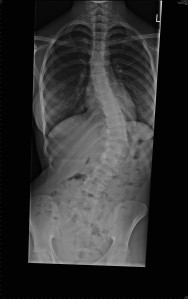The recent discovery of Richard III beneath a car park in Leicester is just the latest example of this need for physical proof to support the historical documentation. The results of this investigation had more than a hint of the proverbial warning ‘becareful what you wish for – as you might get it’. Richard was found to have a deformity of the his back, scoliosis, wounds to the head indicating that he had died in battle, and a skull which, when subjected to the techniques of facial reconstruction, had more than a passing resemblance to his portrait. So did we learn anything new, apart from confirming some of the early Tudor propaganda? I think we learnt two things. Firstly, yet again archaeology has demonstrated it has the power to bring the past to life by literally putting flesh on the bones. Further, there is the prospect of more insights from the skeleton as the full range of forensic archaeology techniques are applied to the skeleton. Secondly, this was a triumph for applied archaeology techniques from two sides of the profession that do not always have the warmest of relationships: the academic and the professional. One of the reasons this appears to have worked so well in this ‘cold case’ is because the University of Leicester could draw upon the close relationship between the academic department of archaeology and the professional archaeological unit which was also based at the university, in the same building. Here is a justification as to why taking an archaeology degree should be rewarding and worthy of the investment in fees.
This discovery was also a highly personal moment for me. My eldest daughter has scoliosis, in the same lower back position as Richard III, although not quite so bad. It was quite shocking to see the level of deformity within the dead King’s back and to know that my own off-spring has had to cope with the pain and discomfort of something very similar. That brings home the immediacy of the past through the medium of archaeology. I’m relieved to say that my daughter has benefitted fully from modern 21st century medicine: with the level of metalwork now in her back she should make a spectacular discovery for archaeologists in the dim and distant future.
1) ‘Gathering Time: the Second Radiocarbon revolution’, Current Archaeology Issue 259, 2011.




The whole “Richard 3.0” thing has certainly electrified the world…even here in the U.S. it has been big news, connecting a “Real” person to Shakespeare etc! Glad to know Lizzie has modern medicine to thank and hopefully won’t be slain in battle any time soon. I shudder to think what future archaeologists would think digging some of us and our accoutrements up in a thousand years or so!